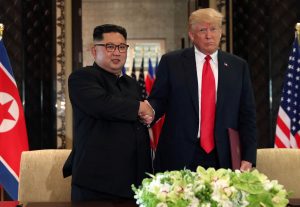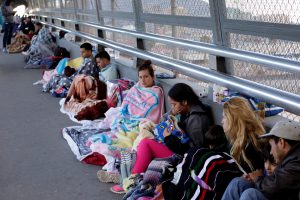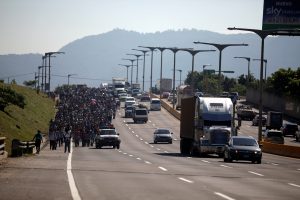
By Joyce Lee and Josh Smith
SEOUL (Reuters) – North Korea’s leader publicly inspected a new weapon for the first time in nearly a year, state media reported on Friday, while it also decided to release a U.S. prisoner, sending conflicting signals at a time of sensitive negotiations.
Kim Jong Un’s visit to the test site of a new “tactical weapon” threatened to sour the diplomatic atmosphere as negotiations between his country and the United States appear to have stalled.
“This result today is a justification of the party’s policy focused on defense science and technology, another display of our rapidly growing defense capabilities to the whole region, and a groundbreaking change in strengthening our military’s combat capabilities,” Kim said.
In Washington, in response to the North Korean announcement, a U.S. State Department spokesman said, “We remain confident that the promises made by President Trump and Chairman Kim will be fulfilled.”
The official was referring to an unprecedented summit in June between U.S. President Donald Trump and Kim in Singapore, where they agreed to work toward denuclearization and peace on the Korean peninsula and establish new relations.
But the agreement was short on specifics, and negotiations have made little headway since.
In a possibly conciliatory gesture, however, North Korea also announced on Friday it was releasing an American citizen detained since October after “illegally” entering North Korea from China.
North Korea has often held previous American detainees for more extended periods.
‘STEEL WALL’
The military test was successful and the weapon could protect North Korea like a “steel wall”, its KCNA news agency said, adding that Kim had observed “the power of the tactical weapon”.
The only picture released by state media showed Kim standing on a beach surrounded by officials in military uniforms, but no weapons were visible.
International weapons experts said the officials around Kim included a leader of the artillery corps of the Korean People’s Army.
South Korea’s defense ministry said it did not have an immediate comment but was analyzing the North Korean weapon test.
Friday’s understated announcement was more likely aimed at reassuring the North Korean military rather than trying to torpedo diplomatic talks, however, said Choi Kang, vice president of the Asan Institute for Policy Studies in Seoul.
“North Korea is trying to show its soldiers that they are becoming high-tech and keeping a certain level of military capability while trying to eliminate dissatisfaction and worries inside its military,” he added.
The test may also have been a response to recent joint military drills by the United States and South Korea, which North Korea said violated recent pacts to halt to “all hostile acts”, said Yang Uk, an analyst at the Korea Defence and Security Forum.
Kim said the weapons system tested was one in which his father, Kim Jong Il, had taken a special interest during his life, personally leading its development.
Kim’s last publicized military inspection was the launch of the Hwasong-15 intercontinental ballistic missile (ICBM) on Nov. 29 last year, though he engaged in at least eight other military-related activities this year, the South’s Unification Ministry said.
STALLED TALKS
Kim this year declared his nuclear force “complete” and said he would focus on economic development.
North Korea has continued to showcase its conventional military capabilities, including at a large military parade in its capital, Pyongyang, on Sept. 9.
But any testing of new weapons threatens to raise tension with Washington, which has said there will be no easing in international sanctions until North Korea takes more concrete steps to abandon its nuclear weapons or long-range missiles.
North Korea has increasingly expressed frustration at Washington’s refusal to ease sanctions and recently threatened to restart development of its nuclear weapons if more concessions were not made.
“They’re trying to signal that they are willing to walk away from talks and restart weapons testing,” said Adam Mount of the Federation of American Scientists. “It is the most explicit in a series of escalating statements designed to send this message.”
A meeting in New York planned this month between U.S. Secretary of State Mike Pompeo and North Korea’s Kim Yong Chol, a senior aide to Kim, was postponed.
On Thursday, U.S. Vice President Mike Pence said Trump planned to meet Kim again in 2019 and will push for a concrete plan outlining Pyongyang’s moves to end its arms programs.
(Reporting by Joyce Lee and Josh Smith; Additional reporting by Jeongmin Kim in Seoul, and Matt Spetalnick and David Brunnstrom in WASHINGTON; Editing by Sonya Hepinstall and Clarence Fernandez)











